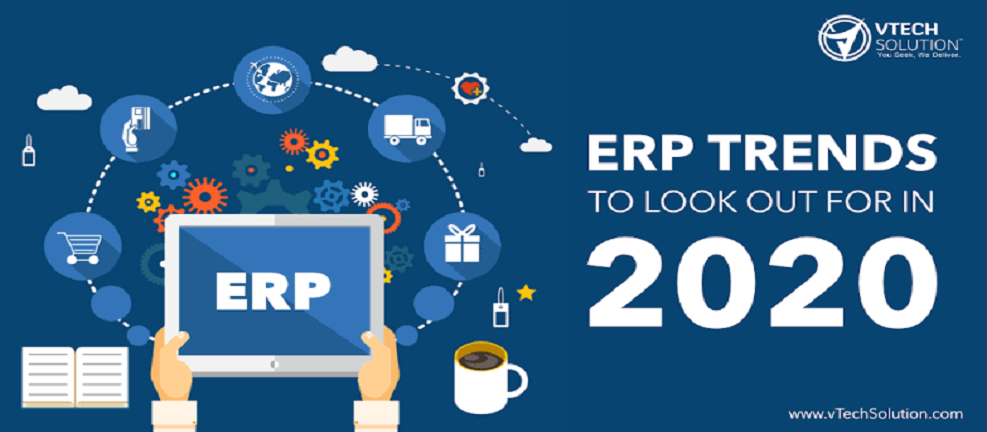Top 5 Predictions for ERP in the Age of Disruption: Insights for CIOs, CTOs, and Business Leaders

Enterprise Resource Planning (ERP) systems have been the backbone of business operations, enabling organizations to streamline processes, enhance decision-making, and improve efficiency. As technology evolves rapidly, so too does the role of ERP. Businesses, especially CIOs, CTOs, and other IT leaders, need to anticipate and adapt to these changes to remain competitive.
In this blog, we explore the top 5 predictions for ERP, discussing what they mean for businesses, how they will reshape operations, and why IT leaders should act now to leverage these advancements.
The rise of user-centric design is reshaping ERP systems, making them more intuitive and accessible. Traditional ERP systems with complex interfaces are giving way to solutions that mimic the simplicity of consumer applications.
What It Means for IT Leaders:
Ease of Adoption: Simplified interfaces reduce training costs and accelerate onboarding.
Enhanced Productivity: Employees can navigate systems quickly, focusing more on their tasks.
Engagement Boost: A user-friendly ERP encourages usage across departments, improving data consistency.
How to Leverage This Trend:
Invest in ERP solutions that prioritize UX/UI design, ensuring they align with the expectations of tech-savvy employees. Collaborate with vendors offering ERP systems with self-service portals and mobile-friendly interfaces.
Smartphones and tablets are transforming how businesses interact with their ERP systems. Mobile ERP solutions allow employees to access critical business data anytime, anywhere.
What It Means for IT Leaders:
Remote Access: Empower teams with real-time insights and decision-making capabilities on the go.
Improved Responsiveness: Field staff can update and retrieve information instantly, improving customer service.
Scalability: Mobile ERP adapts easily to growing teams and changing business needs.
How to Leverage This Trend:
Adopt ERP systems with robust mobile capabilities. Focus on data security and device management policies to ensure safe and seamless mobile ERP usage.
ERP systems are no longer just about recording transactions; they’re evolving into powerful tools for predictive analytics and data-driven strategies. Business Intelligence (BI) capabilities are becoming integral to ERP solutions.
What It Means for IT Leaders:
Actionable Insights: BI-enhanced ERP provides real-time dashboards, enabling quick and informed decision-making.
Trend Analysis: Predictive analytics help businesses anticipate market changes and adjust strategies proactively.
Competitive Edge: Leverage data to identify opportunities, reduce risks, and optimize operations.
How to Leverage This Trend:
Select ERP vendors offering built-in analytics or seamless integration with BI tools. Train teams to interpret and act on data insights effectively.
Social media isn’t just for marketing; it’s becoming a vital part of ERP systems to enhance collaboration and customer engagement. Integration of social networking features within ERP platforms fosters internal and external connectivity.
What It Means for IT Leaders:
Customer Insights: Track customer behavior through social media integration, refining CRM strategies.
Team Collaboration: Social features within ERP systems improve communication and knowledge sharing among employees.
Brand Management: Monitor and respond to social media feedback directly through ERP systems.
How to Leverage This Trend:
Implement ERP solutions with social media analytics and internal collaboration tools. Use these insights to align product offerings with customer preferences and enhance employee collaboration.
Cloud ERP systems are revolutionizing how businesses manage their operations. By moving ERP to the cloud, organizations gain access to scalable, cost-effective, and easily deployable solutions.
What It Means for IT Leaders:
Lower Costs: Reduce infrastructure expenses with subscription-based pricing models.
Scalability: Quickly adjust system resources to match business growth or seasonal demands.
Global Accessibility: Teams can collaborate across geographies without hardware constraints.
How to Leverage This Trend:
Transition from on-premise to cloud-based ERP solutions. Ensure the platform supports seamless integrations with existing tools and emphasizes robust security protocols.
While these ERP trends shape the future, adopting them seamlessly can be challenging. This is where a Virtual Delivery Center (VDC) like AiDOOS steps in.
How VDC Enhances ERP Adoption:
On-Demand Expertise: AiDOOS connects businesses with subject matter experts specializing in ERP technologies, ensuring tailored solutions.
Simplified Project Management: From cloud migrations to BI integrations, AiDOOS helps manage ERP projects effectively across multiple teams.
Cost Efficiency: Pay only for the tasks completed, eliminating overhead costs associated with traditional implementation methods.
Centralized Operations: Manage ERP projects, track progress, and ensure compliance—all from a single platform.
Scalability: Easily expand your ERP capabilities as business needs grow without the complexities of in-house resource allocation.
Ready to future-proof your ERP strategy? Explore how AiDOOS can accelerate your ERP transformation journey with our Virtual Delivery Center. Contact us today to get started!

For modern telecom enterprises, delivering exceptional QoS is no longer optional—it’s a brand differentiator and a strategic lever for growth. Static provisioning models won’t cut it in a world of hyper-dynamic data usage.